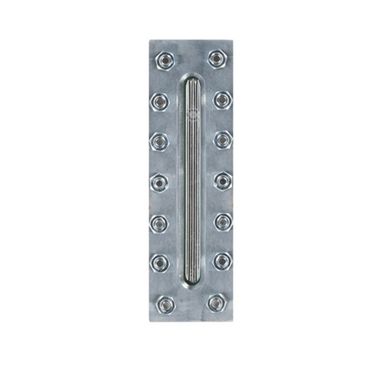Liquid level gauges
Liquid level gauges are devices that indicate the liquid level in pressure and non-pressurized tanks. ZETKAMA offers liquid level gauges with flanged and threaded ends and ones for welding directly to the cylindrical part of the tank. Indicating element of the offered liquid level gauges can be both a frame (PN16, PN40, PN63), and the glass tube (shielded or not). Liquid level gauges are produced from different materials depending on the application. They are used mainly in heating industry to indicate the level of water (drinking, industrial), sewage and any neutral and aggressive medium, depending on the resistance of materials used for their construction.
Read more
Liquid level gauges are critical components used to visually indicate the level of liquid in pressure and non-pressure tanks. Their primary role is to ensure continuous, accurate monitoring of fluid levels, supporting the safe and efficient operation of various technological installations. Depending on their design and construction, they are suitable for applications in heating systems, shipbuilding, chemical and petrochemical processing, and water and wastewater management.
Wide Range of Connection and Construction Options
The ZETKAMA liquid level gauges are available in versions with flanged, threaded, or welded connections. This variety allows for flexibility in integration with different types of industrial tanks and pipelines. The indication element is either a protective glass tube or a metal frame with reflex or transparent sight glass, depending on the model.
Each version is engineered to match specific installation and operational requirements. In standard execution, the gauges are manufactured with safety solutions that provide protection in case of glass breakage. Additionally, selected models are available with optional accessories such as air vents or drain valves.
Materials and Operating Parameters
The gauges are manufactured using carefully selected materials, including carbon steel (S235JR, P250GH), stainless steel (X5CrNi18-10), and alloy steel (13CrMo4-5), depending on the operating pressure, temperature, and the chemical properties of the working medium.
They are designed to operate in temperatures ranging from –10°C up to +300°C, and in pressure classes from PN16 to PN63. The use of reflex or transparent glass, compliant with DIN 7081, ensures clear visibility and reliability during operation. The selection of sealing and structural components guarantees durability and leak-tightness over long periods of use.
Suitable for a Variety of Industrial Media
ZETKAMA liquid level gauges are adapted to work with a wide range of process media, including:
- Drinking water
- Industrial water
- Sewage
- Glycol
- Neutral liquids
- Aggressive liquids (depending on material resistance)
Each device is configured to meet the requirements of specific industrial sectors such as heating, chemical and petrochemical industries, shipbuilding, and utility water systems.
Configurable Dimensions and Standards Compliance
Depending on the type and series, liquid level gauges are available in standard sizes or can be manufactured in customized lengths upon request. Dimensional ranges vary from compact modules with a single glass element to extended designs with connected tubes reaching up to 5000 mm.
All components comply with applicable pressure-temperature ratings, as outlined in the technical documentation. Flanged connections are prepared according to PN EN 1092-1 or ANSI standards (Class 150–600), while threaded versions follow G or NPT standards, with alternative solutions available upon consultation with the manufacturer.
A Proven Solution for Visual Level Indication
With robust construction, modular design, and a wide selection of materials and end connections, ZETKAMA liquid level gauges provide reliable and safe liquid level monitoring across a broad spectrum of industrial applications. Their adaptability to specific installation needs, compliance with industry standards, and support for high-pressure and high-temperature environments make them a dependable choice for demanding operating conditions.


